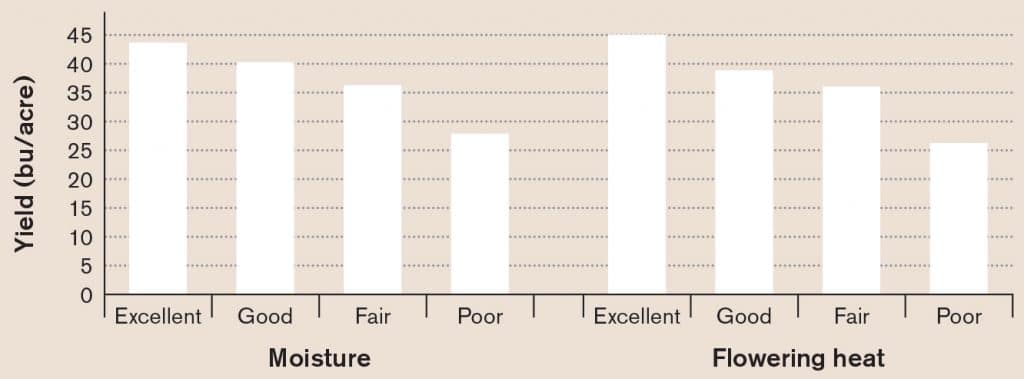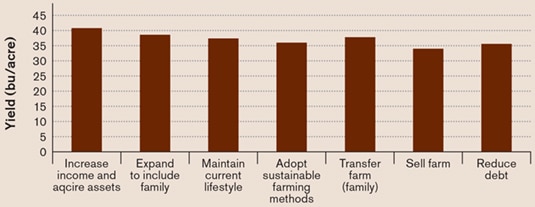Key Result
Using crop inputs could be as important as choosing them, when it comes to maximizing canola yield.
Project Summary
Surveys of Prairie canola producers during the winter of 2011-12 uncovered key factors that provide a positive contribution to canola yield. These were: nitrogen, irrigation, calibrating the seeder, swathing when seed colour changed, soil testing for fertilizer requirements, good to excellent moisture, and good to excellent temperatures during flowering. Factors that commonly reduced canola yield were: seeding late, adverse growing conditions and salinity.

During the winter of 2011-12, Agriculture and Agri-Food Canada (AAFC) and the Canola Council of Canada (CCC) sponsored a survey of canola producers to determine the management practices and inputs they commonly use. An independent survey company contacted producers, collected the required survey data from the set of questions, and provided a summary tabulation of the results.
Data collected were used to determine significant factors that explain differences in yield and profit. The survey also helped to identify production or technical barriers that need to be overcome.
The barrier identification will provide direction for future research that will have the greatest benefit to producers and the industry. Identification of the practices used by the top growers that obtain top yields, versus those with much lower yield, will help to focus extension and information needs for producers.
Survey results

- Nearly two-thirds of canola was no-till seeded in the Dark Brown and Brown Soil Zones of Saskatchewan. No-till was used by about half of the producers in the Black Soil Zone of Alberta and Saskatchewan. No-till was least common in the Gray Soil Zones. Conventional tillage was more prevalent in Manitoba than in either Alberta or Saskatchewan. However, reduced/minimum tillage was more common in Manitoba than conventional tillage.
- Nitrogen fertilizer was the main productive input used in canola production. The ratio of canola yield to nitrogen was about 2.25 to 2.4 lb./bu. for all regions, except Manitoba. Manitoba growers were expecting higher yields, and applied more than 100 lb./ac. of actual nitrogen. But Manitoba yields were lower than expected in the survey year, which increased the nitrogen to yield ratio.
- The source of nitrogen varied by region. Anhydrous ammonia was the most common source in Manitoba and the Gray Soil Zone of Saskatchewan, but urea was the most common elsewhere. Phosphate and sulphur application rates were similar across all regions.
- Past yield and experience were cited as the main decision factors used to determine fertilizer application rates. Soil test was the second most common factor. A significant percentage of producers used general fertilizer guidelines. For some, the main decision factor was cost.
- Almost all producers who swathed canola decided when to swath based on seed colour (73.4 percent). About one quarter of producers used either pod colour or field colour to decide when to swath.

- The majority of canola was seeded with a shank-type opener (as opposed to a disc opener). Drills (disc, press or hoe) were most common in Manitoba and Alberta.
- Most canola fields were sprayed in-crop for weeds more than once. The average number of spray passes ranged from 1.24 in the Dark Brown and Brown Soil Zones of Saskatchewan to 1.65 in the Gray Soil Zone of Saskatchewan.
- Almost all producers indicated they either used herbicides with multiple modes of action or rotated herbicides (91.3 percent combined) to prevent herbicide resistant weeds from evolving on their farm.
- Most soils were reported to have no soil problems. Salinity was the most common soil problem that growers identified.
- Canola yield varied by region and greatly within regions. In 2011, average yield tended to be lower in Manitoba, but this was a spring of very wet conditions in Manitoba and other areas of the Prairies. Manitoba yields were typically lower than the yield producers expected. Yield in the Dark Brown and Brown Soil Zones was good relative to the expected yield for these growing regions.
- Almost 70 percent of the canola fields in this region in 2011 had a canola rotation length of two years or less. For the 2011 canola crop, 10.9 percent of producers in the Gray Soil Zone of Manitoba indicated they also grew canola on the same field in 2010. For the same region, 58.2 percent of growers grew canola on the field in 2009.
Efficient farming

Scott Jeffrey with the University of Alberta is doing an efficiency analysis of the survey results. Technical efficiency is the degree to which the maximum level of output can be obtained from a given combination of inputs. His work will estimate the degree to which producers are able to get the most from whatever level of input use they choose. This is not the same thing as choosing input levels to maximize production.
The presumption is that some producers are “better” than others at getting the most out of their chosen level of input use. Jeffrey’s specific objective is to assess whether the adoption of environmental stewardship practices (e.g. reduced or zero tillage systems, application of precision farming techniques and various nutrient management practices) has any effect on canola producers’ efficiency in the Canadian Prairie region.
Preliminary results suggest that the impacts appear to be either neutral or positive. In particular, evidence of adoption of nutrient management planning, precision farming techniques and (to a lesser extent) soil testing is positively related to technical efficiency. However, producers were not asked about the use of environmental stewardship practices that are not directly related to canola production decisions (e.g. land use changes such as restoration of wetlands or implementation of buffer strips) and the effects of these practices on efficiency may well be different. Work is ongoing to refine and extend these results.
Related research
The Economic profitability and sustainability of canola production systems in Western Canada is a two-part economic analysis of data from this current study (Canola growers survey).





